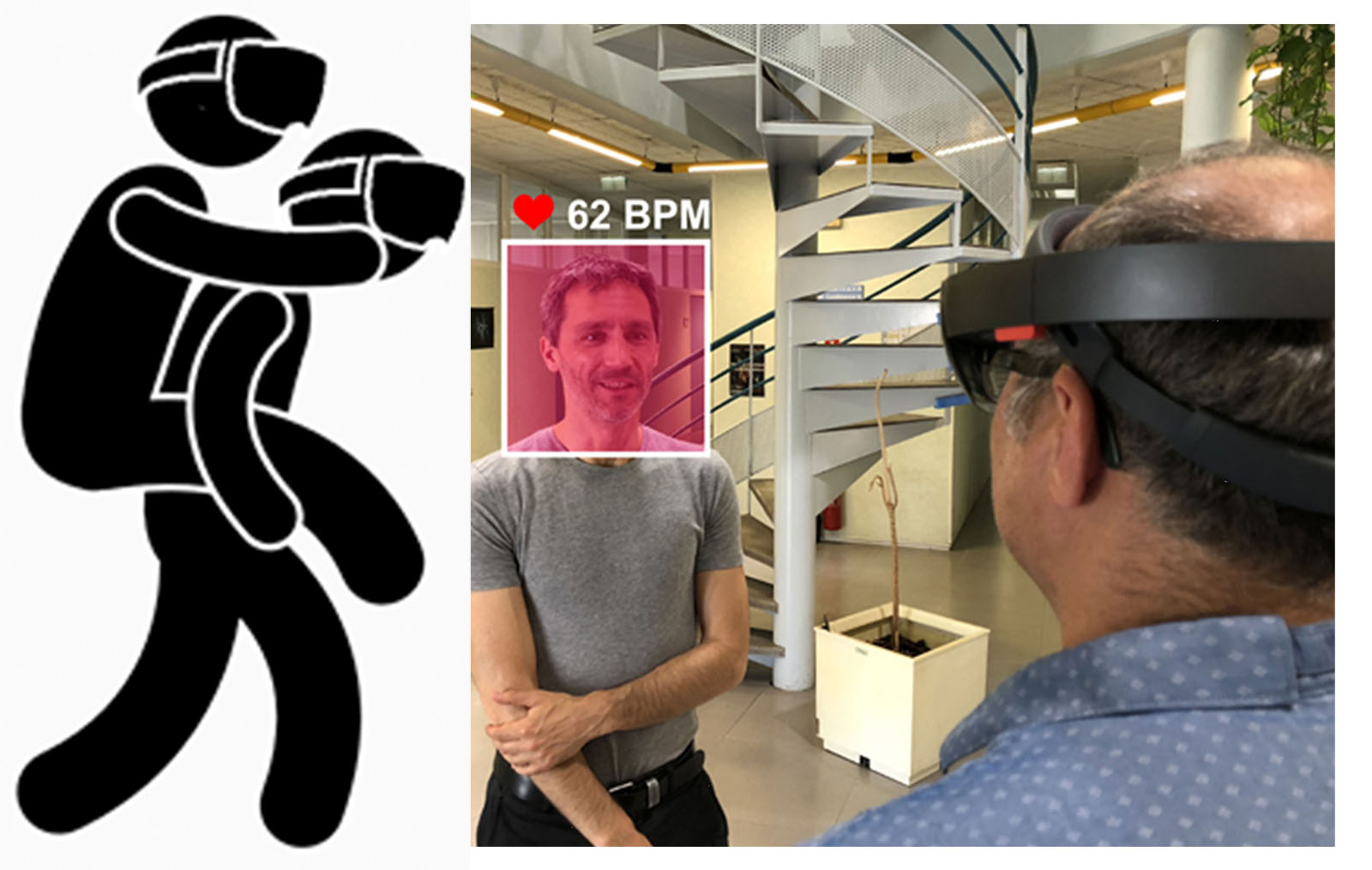Piggy-Back : Collecting data from those collecting other’s data
The participant wears a HoloLens helmet through which he can “see” the heart beat of anyone he looks at. His mission is to collect such data around the exhibition hall. What is more intimate than your heart, symbol of life, seat of feelings? What if anyone can have access in real time to the inner secrets of your body, the details of your metabolism ? Maybe someday, just as in the TV series “Person of interest”, special glasses will show you the data of each person around. As we know, there is a lot of concern about the use that may be made of these data by insurance companies, advertisers and politicians.
But there is something else: what change in human relationships would this induce? It seems that anyone spends a lot of efforts and energy to appear different or be seen in a better light than what he thinks he really is. A big part of culture and education aims at taming or at least hiding the animal within. All that would become pointless. Our emotions, feelings and health would become transparent. How would we look at each others? Could it turn out to be a factor of peace and tolerance or would it exacerbate aggressiveness? Just walk around and watch the faces of your fellow-visitors emerge as strange ghost-like figures, read their heart-beat, and enjoy the experience.
Stolen data ...This is another installation, located in a separate place. Here, the path of each visitor from the previous experiences is recorded, without him knowing. This creates 3D lines (time spent at each point is the third coordinate). These lines are collected and treated through various mathematical filters. The result is the creation of new and interesting patterns that reflect a new “data aesthetics”.
For each visitor, it questions his own experience of the exhibition, from an unexpected point of view. Additionally, and this important, it stages an example of how one can be “tricked” into providing data that can be used for unwanted purpose. Here, the observer is the object of observation.

